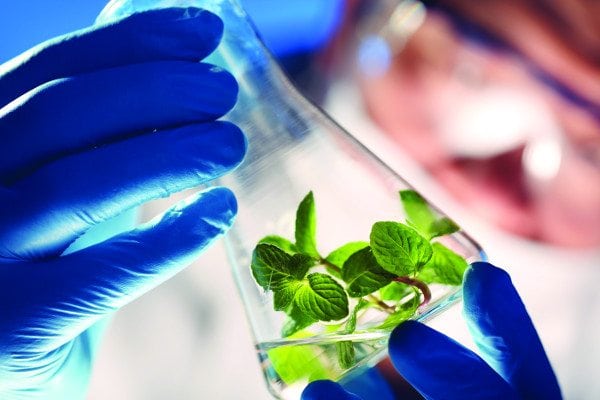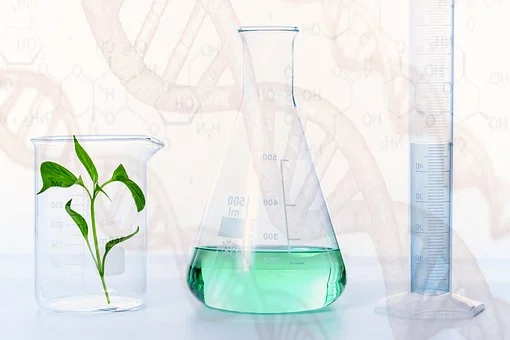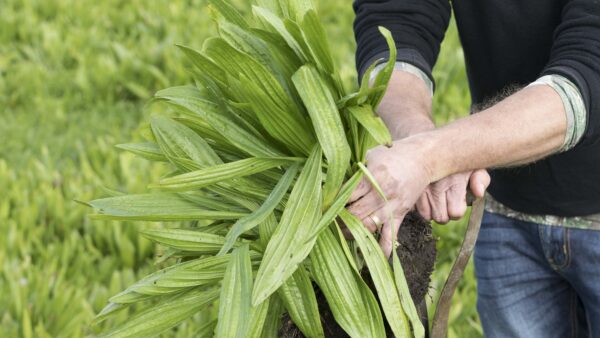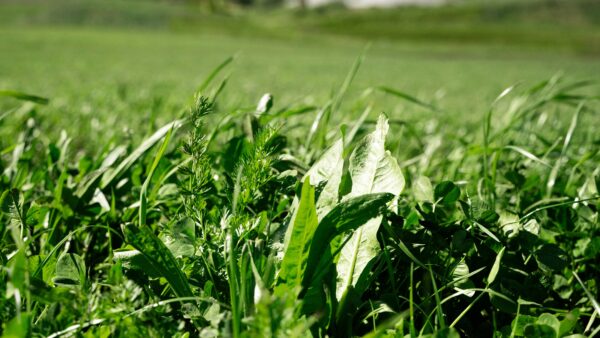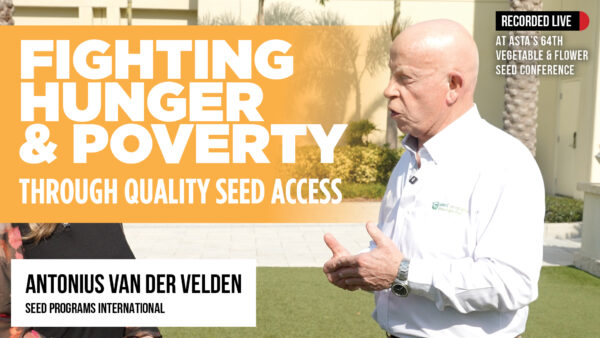For several years, the EU Commission has been discussing the regulatory status of products of plant breeding innovation. As the outcome of the discussions would have a serious impact on the European innovation capacity of the breeding sector, a sustainable agriculture and the global seed trade, ESA had a keen interest in following and contributing to this debate. To support ESA’s advocacy efforts, ESA recently launched the “Embracing the Power of Nature” communication campaign. European Seed spoke with Petra Jorasch, Manager Plant Breeding & Innovation Advocacy of the European Seed Association (ESA), for her take on plant breeding innovation and the impact on EU plant breeding and agriculture, seed trade and society at large.
European Seed (ES): Petra, for the past few years, we’ve been reading a lot about these new techniques. In your view, which are the pros and cons of the new techniques for the various groups in society, such as seed trade, farmers, consumers etc.?
Petra Jorasch (PJ): In light of the global challenges we all face, like climate change, an increasing world population and increasing scarcity of natural resources such as arable land and water, progress in plant breeding has gained unprecedented importance. High-yielding crops that need less input and are of superior nutritional value might help to address these challenges. Longer shelf life of fruits and vegetables might also contribute to avoiding food waste. Farmers face the need to produce in a more resource-efficient way, because the use of agricultural inputs like fertilizers or pesticides will become more and more restricted. Therefore, crops with a better pest resistance or enhanced nutrient use efficiency are needed. Only with that we will be able to establish a sustainable, yet highly-productive agriculture. Also, traders want to have access to grains and vegetables that have a high quality and can withstand long transportation and storage. All these needs can be addressed also by innovations of plant breeding and although the use of the latest plant breeding methods will not change the general objectives of plant breeding as such, they help, to achieve these goals in a more efficient and targeted way.
[tweetshareinline tweet=”The latest plant breeding methods will not change the general objectives of plant breeding as such, but help to achieve these goals in a more efficient and targeted way.” username=”EuropeanSeed”]
ES: The European Commission has been discussing how to interpret the GMO legislation in relation to organisms produced by new plant breeding techniques. Why is this taking so long, and how can we speed this up?
PJ: Yes, indeed, the discussions on EU-level started already around 2007, when the EU-Commission asked member states to set up an expert working group to analyse EU law for genetically modified plants in relation to the latest plant breeding methods. During that time technologies like CRISPR-Cas that are now on everyone’s lips had not even been discovered. Since then the EU commissioned several reports and opinions about these new breeding methods and all of them concluded that the existing legislation can be applied to the products resulting from these latest methods. But of course, this needs an interpretation or clarification of certain terms of the current GMO-directive and this is exactly what the Commission was supposed to do. In the end, it seems that the Commission does not dare to give this interpretation and now it is up to the European Court of Justice to at least decide about some of the questions in the current French Court case C-528/16. Nevertheless, even after this court ruling we will probably still face open questions that need interpretation either by member states or by Commission.
ES: In your view, should the products of such techniques be allowed on the market and under which conditions?
PJ: To be clear, even if products would be regulated under GMO law, they would in principle be allowed on the market after approval. But in fact, of course, an undifferentiated treatment of plants resulting from the latest breeding methods under GM-regulation would for Europe more or less signify the end of a development of these plants at least for most of the breeding companies since they cannot afford the high financial and regulatory hurdles associated with a premarket approval under GMO-legislation.
We as seed sector think that it needs a differentiated view on the plants resulting from the latest breeding methods. If these plants could also have been produced through earlier breeding methods or by natural processes without human intervention, we do not see a need for additional regulatory oversight like for classical GMOs. These plants should from our point of view be marketed under the regulatory framework of conventional plant varieties.
ES: What will be the impact for the EU seed trade of regulating these new techniques in the same way as GMO’s?
PJ: As indicated in the previous answer, if these plants would be regulated as GMOs, we expect that at least for the EU seed market and with that also for the farmers and seed trade within Europe, they would most probably not play a role. This means that Europe’s farmers and traders will not have access to the respective plant varieties and products which will be a competitive disadvantage since in other parts of the world these products will probably not be regulated as GMOs as we already see in North America and parts of South America.
[tweetshareinline tweet=”If these plants would be regulated as GMOs, Europe’s farmers and traders will not have access to them which will be a competitive disadvantage” username=”EuropeanSeed”]
ES: Some groups in society seem increasingly reluctant to embrace new innovations, and some even start spreading misinformation. What is driving that and how can we change that?
PJ: Indeed, the same groups that actively campaign against GMOs also started to campaign against the latest breeding methods. They call them “hidden” GMOs because most of the plants resulting from these methods are not distinguishable from conventionally bred plants. With this terminology, they try to scare the public, because in the wider public the term “hidden” is perceived as something weird or scary, something where industry is seen as trying to hide things. By associating the latest breeding methods with GMOs, NGOs try to create an association with general concerns of parts of the wider public about the environmental impact of the so called “industrial agriculture” as well as concentration processes in the seed sector. The messages are framed as either “black or white” without any “shades of grey”.
Up until today, there is no serious study showing any environmental or public health hazard for GMOs, but still there is that heavy regulatory framework that prevents a high percentage of the players in our diverse seed sector from adopting the technology. Also, the diversity of products and crops is very limited due to the high regulatory costs that economically justify product developments for the largest crops and a very few traits only. But such a deeper insight and analysis requires an interest and willingness to discover the “shades of grey” which is often difficult and here NGO’s come into the play with their “black and white” messages that are easy to understand and where they can make a living from.
Also, our sector and the benefits plant breeding innovations provide and always have provided to society are mainly unknown. Therefore, we started our new communication efforts to at least try to get some more differentiation and “the shades of grey” as well as positive messages across to a wider interested public and political stakeholder.
ES: ESA has recently started the campaign ‘Embracing the Power of Nature’. Why was this necessary and what is the main message of the campaign?
PJ: As I mentioned, the benefits plant breeding innovations provide to society are widely unknown. Therefore, we started the campaign, which is not about the latest innovations only, but it is about communicating the importance and the benefits of plant breeding in general. We want to show how plant breeding helps to meet consumer expectations, how it helps to find natural solutions to meet the food demand and how it supports resource efficient farming by safeguarding yields and reducing losses in the field. The Campaign title “Embracing the Power of Nature” should show that plant breeding is about using tools and mechanisms provided by nature to improve plant production and plant based food products. We decided on a digital campaign using social media like Facebook and Twitter based on a campaign website. With this we hope to be able to engage with a wider interested public and the respective political stakeholders.
ES: How are you engaging ESA members in spreading this message? Are you seeing the first effects?
PJ: The campaign was set up without any ESA branding. We share all the campaign materials with our members and with that, members can adapt and make use of the material according to their needs. Members can engage on different levels: they can share the ESA messages on their social media channels, but they can also make use of the whole material independent of the ESA activities. Not all our members are already active on social media, but those who are active are really committed to engage in the campaign. Some even translate the visuals, others translate the Facebook or Twitter messages, but use the original visuals in English language. We have regular exchanges with our members on the development of the campaign and expect a continuous growth of engagement for 2018.
ES: At the moment, we are seeing a divergence between countries in how they regulate these new techniques. What are the pitfalls of such an approach, and what needs to be done?
PJ: In fact, the first countries already started to take decisions on the approval of products resulting from the latest breeding methods and we see that most of these countries will not regulate those plants as GMOs that are indistinguishable from conventional plant varieties. With that they follow the same approach as has been suggested by ESA and ISF. ESA actively participates in the discussions on ISF level to promote not only criteria for a harmonized scope of regulatory oversight on global level, but also to have a harmonized implementation of these criteria to prevent drawbacks and barriers for the functioning of international cooperation in research, breeding, access to germplasm as well as international seed and grain trade.
ES: The grain trade sector has also been very active in this debate. How is the interaction between grain and seed trade?
PJ: The seed and the grain trade sector always had common needs and interests. Both are international businesses and grains as well as seeds are distributed worldwide. Therefore, ESA on EU level as well as ISF on international level are in a continuous dialogue with the grain trade sector to achieve a common understanding of the challenges we face with the latest plant breeding methods and with that a way of cooperation that allows business on each side without major hurdles and risks for each sector. Discussions are ongoing.
[tweetshareinline tweet=”The seed and the grain trade sector always had common needs and interests. Both are international businesses and grains as well as seeds are distributed worldwide” username=”EuropeanSeed”]
Where on the Web: http://plantbreeding.eu/
https://www.facebook.com/euroseeds
https://twitter.com/ESA_euroseeds
Editor’s Note: Petra Jorasch is manager Plant Breeding & Innovation Advocacy at the European Seed Association (ESA).


